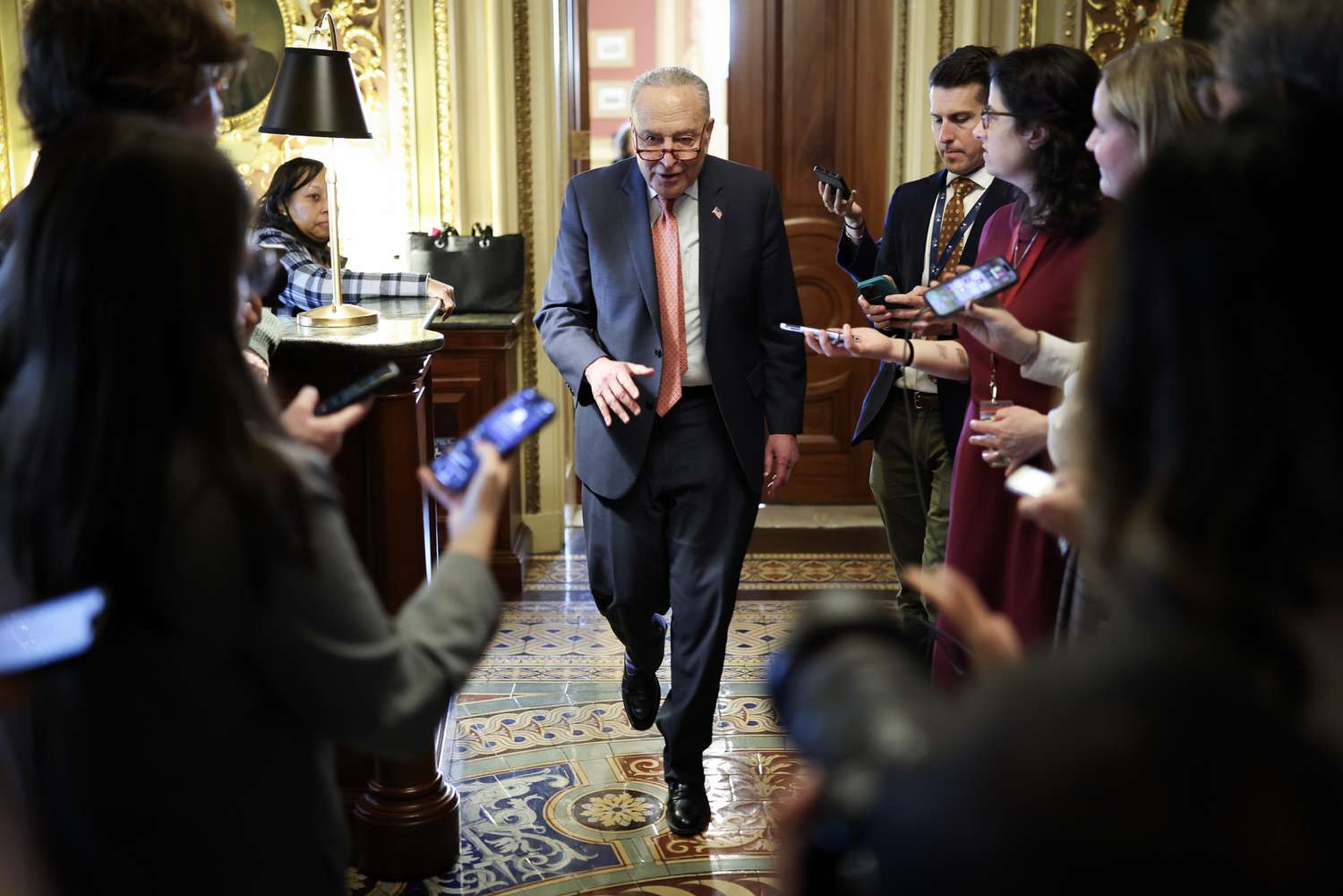3 Stocks to Sell on an Escalating Trade War

Last week, InvestorPlace Senior Analyst Louis Navellier decided to sell GigaCloud Technology Inc. (GCT) from his Accelerated Profits portfolio.
At first glance, the move seems surprising – like watching a chef throw out a perfectly cooked steak. GigaCloud was a fast-growing tech firm with a sizzling 30%-plus rate of return. Revenue surged 65% last year, and net profits rose to $125 million – a sixfold increase from two years before
However, GigaCloud specializes in large parcel shipping. It uses software to help pool small shipments into larger ones to save transportation costs, and its core business involves connecting Asian manufacturers with U.S. resellers.
That business is now in trouble.
On February 4, President Donald Trump imposed 10% tariffs on all goods imported from China – temporarily stopping all postal service shipments while the details were worked out. A month later, these duties were raised to 20%.
This will have a devastating effect on GigaCloud’s industry. Many Chinese exporters already run on razor-thin margins; a 20% surcharge on all goods will throttle their business, slashing demand for GigaCloud’s logistics services. Analysts have dropped GCT’s 2025 earnings estimates by 20% since January, and more pain is likely.
GigaCloud now scores a “D” rating in Louis’s Stock Grader (Navellier subscription required) – about as appealing as a one-star Yelp review.
The Los Angeles area-based logistics firm isn’t the only company that will struggle with rising U.S. tariffs. As Trump said in an interview with Fox News host Maria Bartiromo, America’s now going through a “period of transition” that could see “a little disruption.”
So, this week, I’d like to talk about three other companies Louis has recently sold to protect his portfolio from further disruption. If you have these stocks in your portfolio, you might also want to consider reducing your exposure to these less appetizing picks…
Waiting for the Shoe to Drop
When most people think of UGG shoes, they might picture comfortable sheepskin footwear used by surfers and college-aged students. The brand has a cultlike following and is particularly popular with the TikTok crowd.


The modern college campus uniform
Investors, on the other hand, will know that UGG is a part of the Deckers Outdoor Corp. (DECK), a footwear conglomerate with a portfolio of popular names, also including Hoka, Teva, and more. It’s one of many brand-aggregating companies that regularly buy and sell these “assets” to maximize efficiencies and increase profits. In 2013, for instance, Decker acquired Hoka to build a comfort running shoe line, complementing its UGG offerings. Two years later, it bought Koolaburra and bolted it to its UGG brand.
These efficiencies worked exceptionally well during boom years. Louis added shares of this fast-growing firm in Growth Investor last yearas margins surged and profits rose at double-digit rates.
However, the “eggs in the same basket” strategy cuts both ways. The rise in Chinese tariffs now threatens Deckers’ profitability, and Louis sold the stock last month.
Consider the sheepskin that goes into UGG and Koolaburra shoes. Deckers took this expensive material and made it far more affordable to younger buyers by running almost its entire supply chain through just two Chinese tanneries. Its manufacturing is also focused in just two countries – China and Vietnam.
That puts Deckers at a significant disadvantage to brands with American-based manufacturing like New Balance. Analysts have slashed first-quarter earnings estimates by 20%, and profits are now expected to decline 29% year-over-year to $0.58 per share. DECK shares were already quite expensive because of their previously high growth, so they have further to fall.
Derailing a Turnaround Story
For years, our next stock to sell was known as much for its controversy as for its clothing. The mall retailer relied on hypersexualized advertising aimed at teenagers, and the CEO once infamously quipped his brand was “only for cool people.” He resigned in disgrace in 2017.
Abercrombie & Fitch Co. (ANF) would eventually turn things around. The replacement CEO, Fran Horowitz, axed the company’s overtly sexual advertising and refocused the firm on a back-to-basics lineup targeted at 20-year-olds. Shares have returned 520% under her watch, prompting Vox to run a piece in 2024 explaining how the “once-maligned retailer quietly became a closet staple.”
Rising tariff threats now threaten to derail Abercrombie’s turnaround. The apparel firm sources almost half of its production from Vietnam and China, and both countries face rising U.S. tariffs. Vietnamese officials are especially worried because their country runs one of the world’s largest trade surpluses with the United States – a factor Donald Trump has vocally criticized.
That’s bad news for Abercrombie, which has historically relied on wide gross margins to offset its high overhead costs. Every 5% increase in its cost of goods will reduce net profits by 30%, and raising prices will prove tricky because cheaper alternatives to its “back to basics” lineup exist at rivals like Target Corp. (TGT).
Louis also notes that ANF has seen a lack of buying pressure – a negative sign even when profits and sales are rising. He sold shares of ANF from Growth Investor last month, and I would recommend a similar action if you still have the apparel maker in your portfolio.
Close to Home
Finally, homebuilders are beginning to feel the pinch of U.S. tariff threats.
On March 7, the Fannie Mae Home Purchase Sentiment Index dropped 1.8 points to 71.6 – its first year-over-year decline in two years. Sixty-two percent of Americans now believe it’s a good time to sell a house, while only 24% think it’s a good time to buy. The survey blamed the decline on high mortgage rates and “consumers’ growing concerns about their own personal financial situations.”
That’s impacting American homebuilders, especially those focused on single-family home construction like Toll Brothers Inc. (TOL). On February 19, the luxury homebuilder noted that lower-end market demand had softened, and that the overall spring selling season had declined from “solid” to “mixed.” Management plans to reduce housing starts of “spec” homes – the riskier type (without a specific buyer) where homebuilders construct on the speculation that it will easily sell for profit.
Rising input costs could impact homebuilders further. Homebuilders currently import 70% of softwood lumber from Canada, because the U.S. does not produce enough timber for domestic consumption. In addition, the U.S. also imports:
- 45% of copper, used in household wiring
- 62% of household appliances
- 71% of gypsum, used in drywall
That means tariffs will have a significant effect on home prices. According to CoreLogic, current tariff rates will raise the average new home price by 5% to $422,000 this year. This figure will get worse as more tariffs are enacted.
Toll Brothers’ recent earnings miss now downgrades the stock to a “D” in Louis’ Stock Grader system, and he sold shares from Growth Investor last month.
Buying Stocks in Times of Panic
Trump’s first round of tariffs in 2018 were tough on many importers. Toll Brothers itself lost 10% of its market value by the end of 2019, while Abercrombie shed 15%. Some apparel firms like Forever 21 and Victoria’s Secret parent L Brands did so poorly that they were forced to reorganize.
But many of America’s top tech firms did well in 2018. Over the same period, we saw dozens of tech firms go up.
- Advanced Micro Devices Inc. (AMD) soared 285%.
- Krystal Biotech Inc. (KRYS) jumped 459%.
- Enphase Energy Inc. (ENPH) skyrocketed 689%.
That’s because high-growth innovators don’t usually care if there’s a 10% surcharge on washing machines or a 25% price hike on timber.
Instead, they care about the big ideas that will power the next generation of technology. Artificial intelligence… biotech… renewable energy… companies in these hypergrowth il often succeed despite macro headwinds.
Now, I know this week’s selloff looks ugly. And we might be at the start of an even greater decline. Only President Trump knows how far he will escalate his trade war.
But investors seeking a way out should consider watching Louis’ latest presentation on a technology that could create the next round of Nvidia Corp. (NVDA)-like gains.
The fact is, at some point, quantum computing will have its “ChatGPT moment.”
It could happen at Nvidia’s Q-Day on March 20. But even if it doesn’t, you’ll want to get in on this before the crowd, and time may be running out…
By the time the mainstream public catches on to quantum computing, the truly massive gains will already be made.
That’s why Louis has been urging investors to position themselves early.
And one way to do that is by investing in the small-cap quantum computing stock perfectly positioned to profit from Nvidia’s quantum push. This company holds 102 patents and already works closely with Nvidia, Microsoft, Amazon, and NASA.
Don’t wait until the market fully catches on. Watch the free replay of Louis’s Next 50X NVIDIA Call for all the details – before it’s taken down.
Until next week,
Thomas Yeung
Markets Analyst, InvestorPlace
















